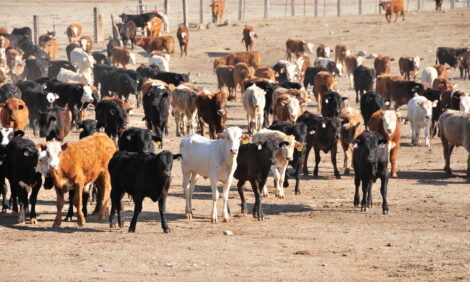



Carcase Balance Challenges Change in Run-Up to Christmas
UK - The year-round challenge processors face in achieving carcase balance is brought sharply into focus during the run-up to the festive period.Evidence from retail sales analysis does not show a significant lift in the volume of beef sold, although it does reveal that the products bought change, according to Stuart Ashworth, Head of Economics Services with Quality Meat Scotland (QMS).
“What we see over the Christmas period is that sales of beef mince and steak decline, while sales of roasting joints and stewing meat increase. Similarly, there is a growth in demand for leg roasts of lamb offset by a decline in sales of shoulders and lamb chops,” said Mr Ashworth.
This is no different from the carcase balance challenge at other times of the year, he said, other than the particular cuts in surplus have changed.
“Meeting the demand for roasting cuts can often mean cold stores filling with unsold mince and in the retail market there is little evidence of beef selling at premium prices over the Christmas and New Year period,” observed Mr Ashworth.
“Hence, provided there are enough cattle and sheep to meet the demand for roasting cuts, there is little incentive for processors to pay more.”
The current volume of cattle reaching the market is still slightly below last year’s levels but, because of increased carcase size and currency induced challenges in export markets, the home market remains well supplied with beef.
Lamb prices have risen in recent weeks because the supply of lambs has dipped below those of a year ago, he added. However, again challenges in export markets have meant that prices have not yet risen to levels seen last year.
The period before Christmas regularly generates some high prices for show livestock involving a small number of animals in which considerable time and energy is devoted to turning them out for special sales, he said.
However, analysis of the market over the festive period in recent years reveals there has not been any significant lift in prices.
“The reality is that cattle prices currently trail around 10 -12p/kg deadweight lower than last year and, while prime lamb sellers have seen prices rise in the past month, they still trail year earlier levels by around 20 p/kg liveweight,” observed Mr Ashworth.
Over the past couple of years the second week of December has recorded a slight peak in prime lamb price, he said, but the price movements in January quickly overtake the December price.
“It is increasingly hard to detect any major influence of Christmas demand on prime cattle prices. In three of the past five years there was a small peak in prime cattle price in the final week of November and the first week of December while in the other two the price continued to rise from November into the early months of the following year,” said Mr Ashworth.
In practice then, he observed, the Christmas trading period is driven by the normal trading influences of the red meat trade including the maturing period for beef, the general availability of livestock and consumer demand.
“It is, for example, recognised that premium eating quality is achieved from beef that has matured for 21 to 28 days,” he said.
“This pushes the slaughter date for beef to meet this market specification at Christmas into the final week of November and first week of December.
“Sheepmeat does not need to mature for as long a period hence any price rise is likely to be seen in the second week of December.”
TheCattleSite News Desk


